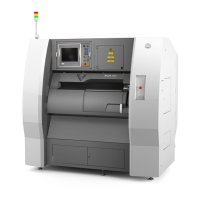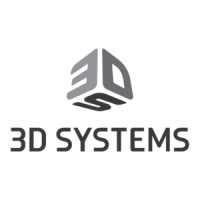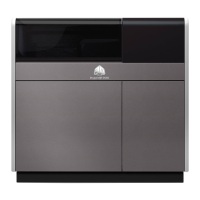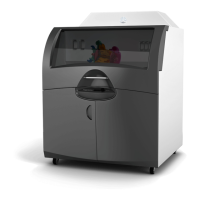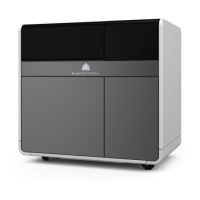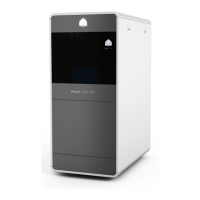123D SYSTEMS, INC.
VACUUM CLEANERS
Installations must have a wet separator, explosion proof vacuum cleaner.The RUWAC, NA35-110 explosion proof vacuum is
recommended. Certain metal powders will react with water forming hydrogen gas, this process is sped up when the powder to water
ratio is higher. It is therefore necessary to rell or replace the liquid of the wet separator regularly as indicated in the vacuum cleaner
manual.
FIRE AND EXPLOSION PREVENTION
In no case are smoking, open ames, heat sources or spark sources to be allowed in the vicinity of powders or in rooms where powders
are handled. This includes all electronic devices as well as non-ATEX or EX certied equipment. Use non-sparking tools, when working
with powder. Likewise activities which generate heat or sparks, such as grinding or welding, should not be performed near combustible
powder or in rooms where such powder is manipulated.
The grounding of all personnel is highly recommended. This is especially true for any location where combustible powders are used.
As ne powder can remain static in the air for hours after dispersion, it is recommended that all rooms where powder manipulations
occur are equipped with grounded conductive or antistatic ooring. Furthermore the personnel entering those rooms must wear safety
shoes with antistatic or conductive soles and antistatic or conductive outer garments. If grounding through conductive ooring is
impossible, the use of antistatic bracelets, combined with grounding to a work bench or the equipment itself is recommended. Likewise
the use of carts or other devices with non-conducting or non-static wheels is prohibited.
ROOM VENTILATION
A room ventilation system is required in order to:
• Prevent Argon accumulation and
• Remove suspended ne powder particles.
Argon may be released into the room as a result of opening the machine or from using other sieving station. Even though Argon is an
inert gas, it still poses a suffocation danger when it is allowed to accumulate. Argon is heavier than air and will “pool” on the oor and
in any low points. Therefore the room must be equipped with a system which continuously exchanges the air in the room a minimum of
four times per hour.
A room ventilation system is also required to prevent the presence of ne powder particles suspended in the air. This presents both a
health and an explosion hazard. Because powder nes can accumulate in lters, the system must either:
• Be a lter free system.
-- or --
• The system must be equipped with immersion ltration
Ventilation
If available, use point ventilation at your work station when handling powder. Set it to the correct strength to ensure maximal removal of
air suspended powder, while preventing the ventilation itself from causing agitation of static powder
MATERIAL SAFETY
All materials certied by 3D Systems are safe during normal operation. However, you should be aware of the following issues:
• Any material, material-like substance, or airborne cloud of material has a remote chance of rapid combustion.
• Breathing dust / powder may cause respiratory irritation.
• Material safety hazards are minimized by good industrial housekeeping and ventilation practices.
• Spilled material can cause the oor to become very slippery.
• Material should be sifted in a well-ventilated room.
Refer to the SDS’s and to 3D Systems material guides for information on specic materials.
WARNING: USING MATERIALS THAT HAVE NOT BEEN CERTIFIED FOR USE IN THE DMP EQUIPMENT MAY CAUSE
HEALTH OR SAFETY HAZARDS AND MAY DAMAGE THE EQUIPMENT AND VOID THE WARRANTY.
Material Ignition Information
Powdered materials can be ammable and can be ignited by static electricity in a non-inert environment. Refer to each material’s SDS
for specic information.
Use only Class D extinguishing agents. Never use water, carbon dioxide, Halon or non-class D foam or powder on res involving
reactive metal powders.
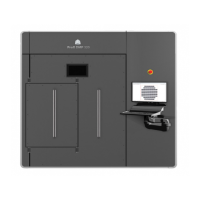
